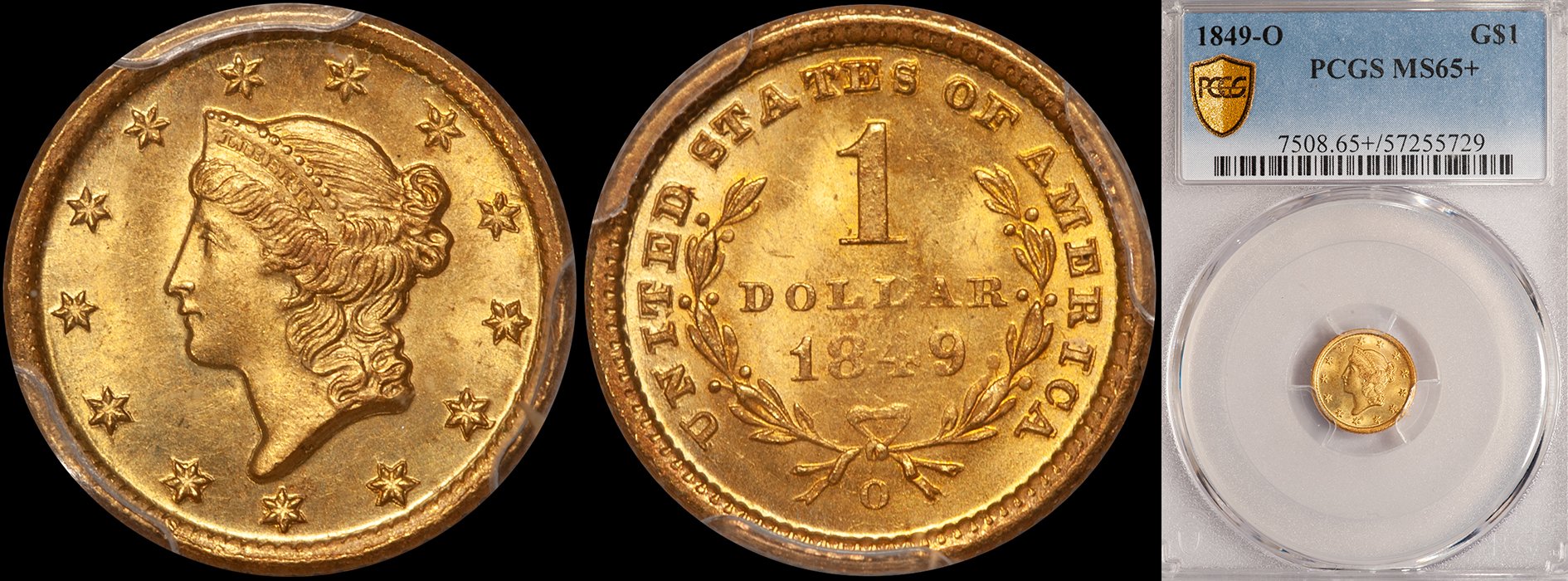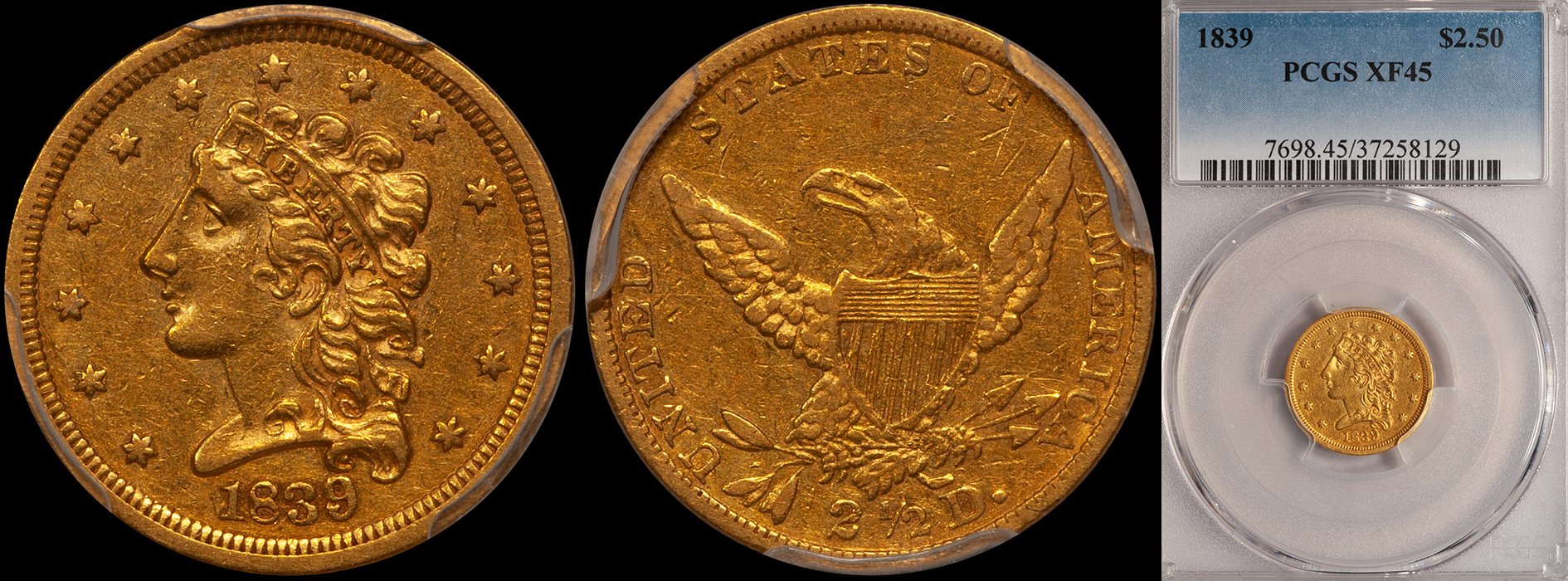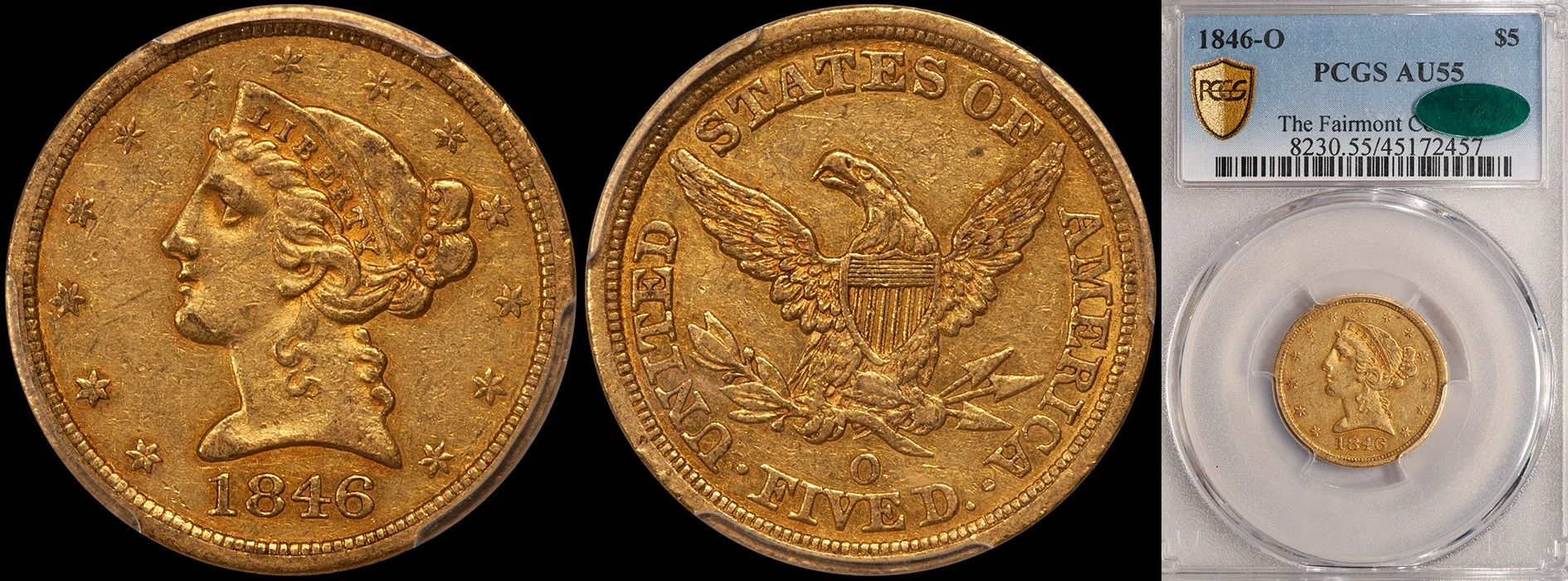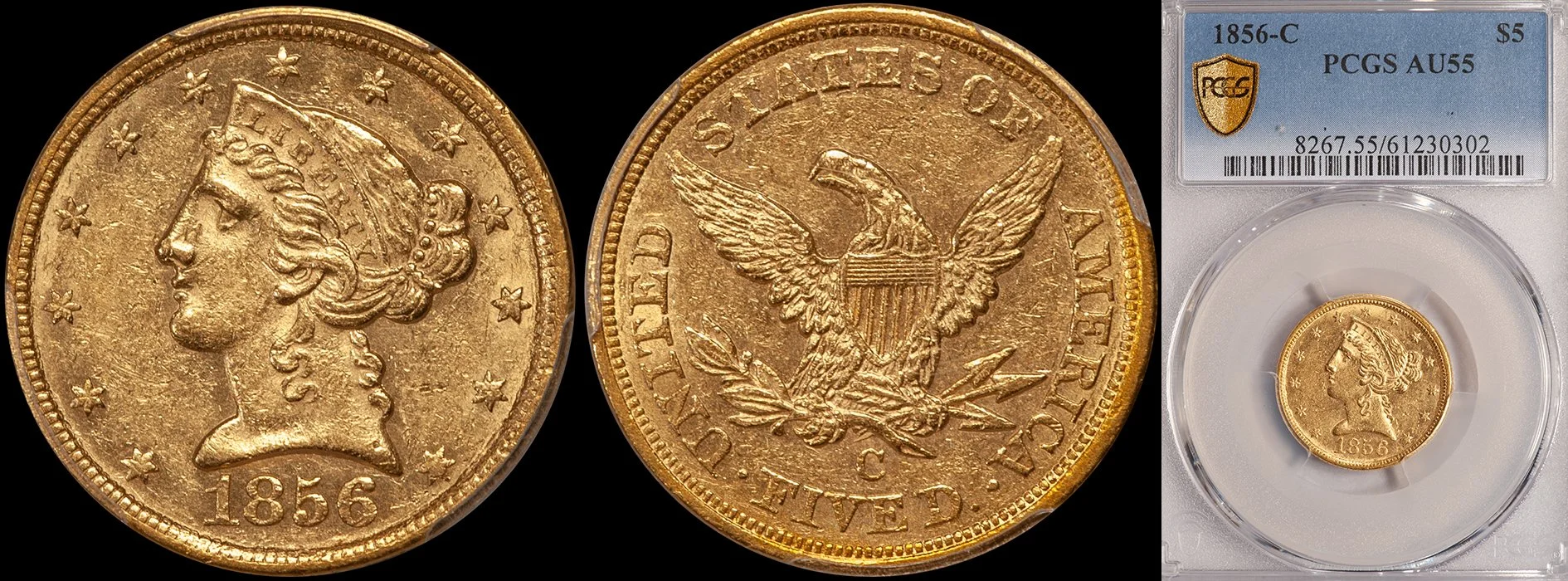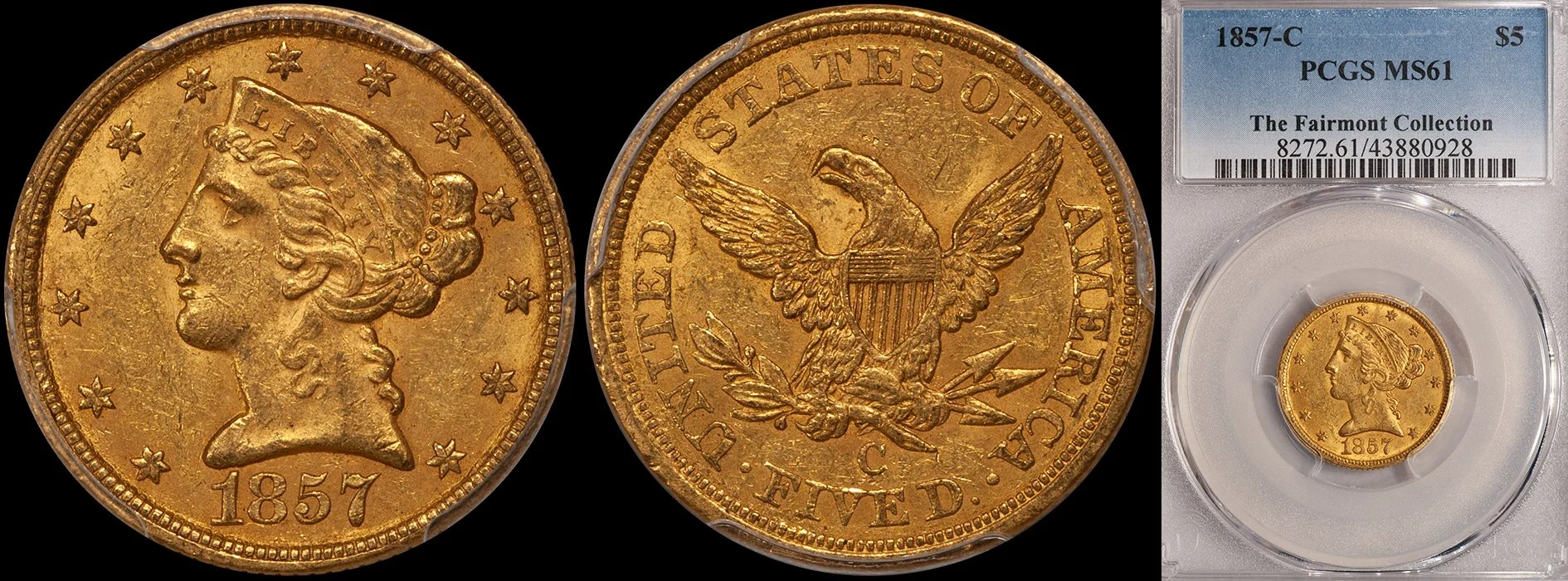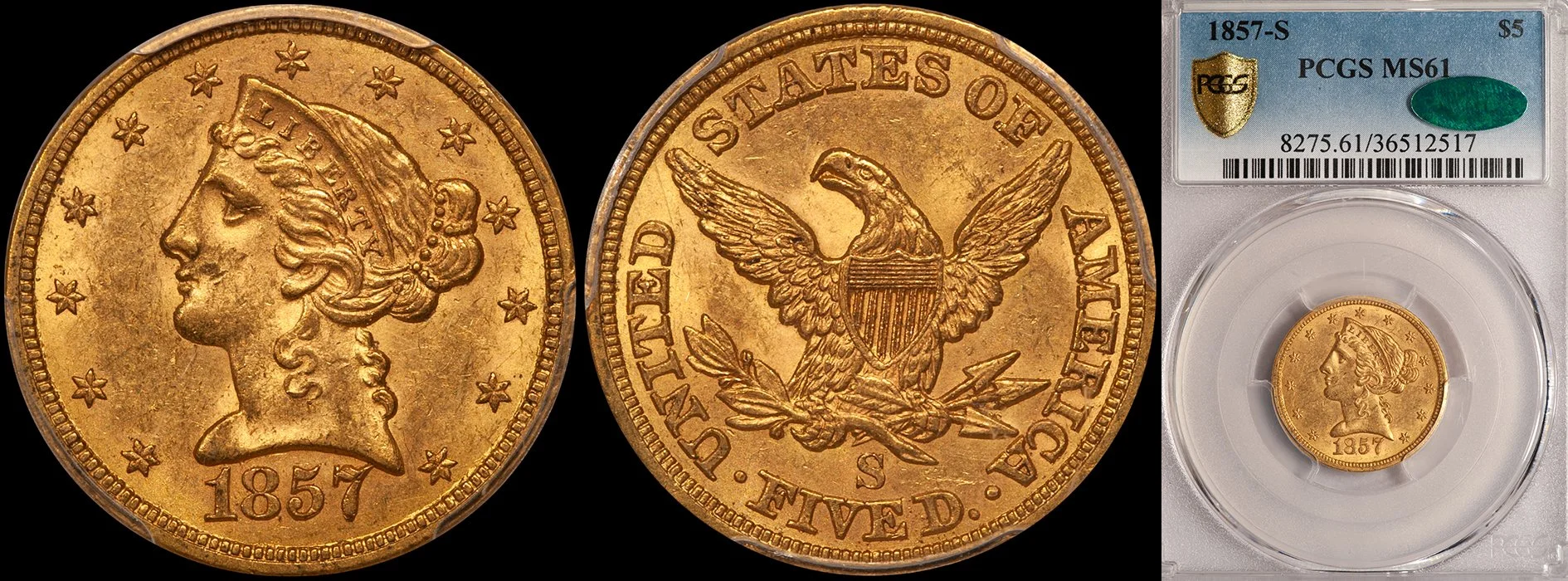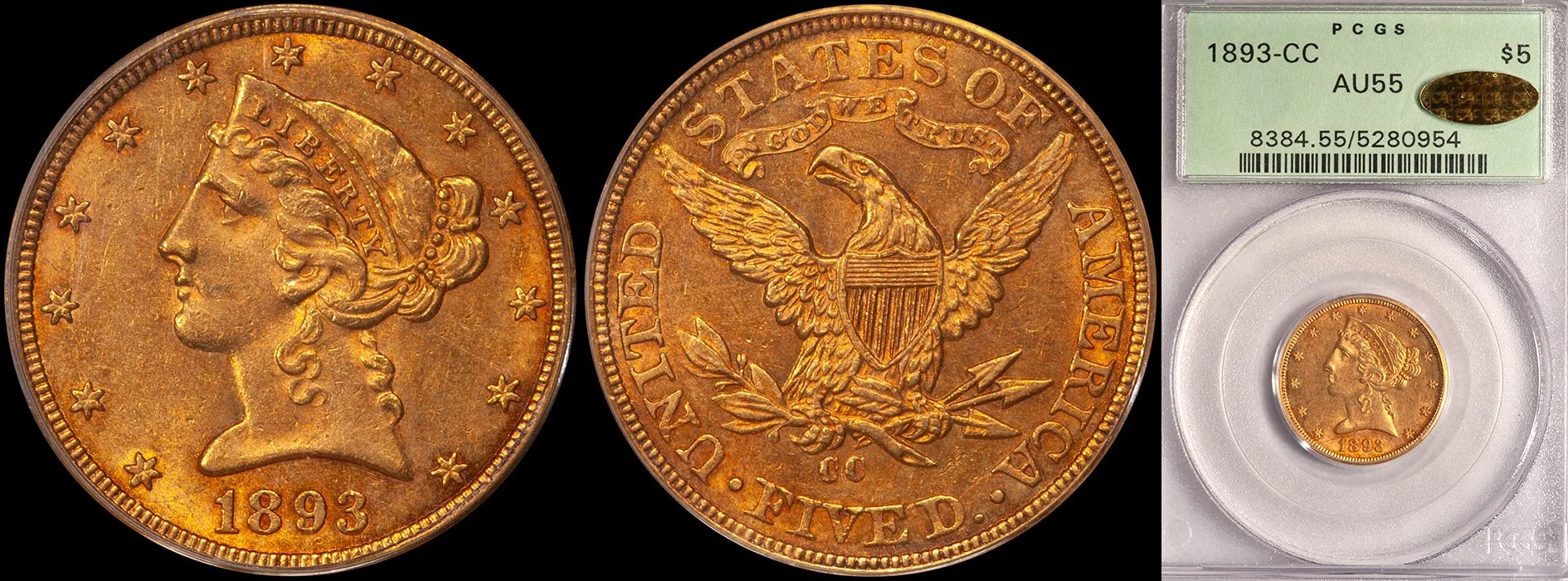Why Shouldn't A Nice VF Charlotte or Dahlonega Half Eagle be Worth $3,000...or More?
/In recent years, prices for average (B- quality) to above-average (B to B+ quality) Charlotte and Dahlonega half eagles have increased due to strong collector demand. I used to be able to come back from a show (remember those?) with four or five very decent Very Fine C and D half eagles with my average cost being around $1,400-1,500. Today, returning from this hypothetical show I’d be lucky to have bought two VFs with my average cost being around $2,000-2,200.
This got me to thinking: what’s the true market value of a nice VF Charlotte or Dahlonega half eagle? The figure that popped into my mind was $3,000, and then I got to thinking maybe this was actually too low given current market conditions.
In July 2021, the rare coin market is unquestionably very strong. Among the strongest areas is dated gold from the 19th century. This market segment is being driven by Condition Census pieces graded by either PCGS or NGC and approved by CAC. But there is plenty of strength in the more plebian dated gold areas with very strong demand noted for nice, interesting collector quality coins. These don’t necessarily have to be CAC approved; although it certainly helps.
By comparing a VF common date Charlotte or Dahlonega half eagle to other areas in the market, I think I can make a strong case that these coins are currently undervalued.
Let me start by advocating for a nice VF Charlotte or Dahlonega half eagle. By “nice” I’m referring to a coin with reasonably original color and surfaces; not all scrubby and marked-up. I’m not referring to a better date nor am I referring to a Fairmont-quality piece; i.e. one with terrific originality and PQ overall eye appeal.
1845-D Half Eagle in VF and CAC approved
I’ll be mentioning population figures in the following comparisons, so let’s look at an 1845-D. In the various VF grades, PCGS has a current population of 58. Factoring resubmissions, this is likely 40 or so actual coins. For the date, the entire population at PCGS is 321. Factoring resubmissions, this is probably in the area of 200-225 actual coins. Not a major rarity but certainly not common. And if you factor in CAC numbers, the 1845-D suddenly looks kind of scarce with just four coins in VF having been stickered, and a total of 37 for the date.
What’s the market like for collector quality C and D mint half eagles? It has always been good but, of late, it has been very good to excellent. Whenever I list a nice VF coin for sale—especially one with CAC approval—it sells quickly and with multiple inquiries.
The first coin type which I’m selecting as my basis of comparison is an MS66 common date Saint Gaudens double eagle. As I write this, an average quality example sells for around $3,000-3,250. With a CAC sticker, you are looking at a $4,500 coin.
Getting more specific, let’s choose a 1928 $20 graded MS66 by PCGS. The most recent population report from PCGS shows that 3,284 coins have been graded by this service.
1928 $20.00 PCGS MS66 CAC
An MS66 1928 Saint has a number of things working in its favor. It is big, attractive, and easy for the neophyte collector to understand. But there is no getting around the fact that this is a truly common coin and that hundreds exist in grades higher than MS66. I think it’s safe to say that you aren’t getting much bang for your buck with a 1928 Saint in MS66.
How about the same coin but with a CAC sticker? You are talking about a coin with a population of 347 in this grade with 23 higher (all graded MS67). There is no denying that this is a neat coin, but is it $4,500 neat? In my opinion, no. I would much rather have a nice VF30 1845-D half eagle at, say, $3,500.
1891-CC $5.00 in PCGS MS62 CAC
The second coin type I’m selecting as a comparison is an 1891-CC $5 in MS62. This is the last affordable grade for the most available Carson City half eagle. A decent non-CAC PCGS example should be available in the $2,500-3,000 range, while a CAC approved example will run around $3,250-3,500.
There is a lot to be said for an MS62 1891-CC half eagle. It should be a pretty nice coin from a visual standpoint with good luster and just a few noticeable marks. This issue always comes well struck, and if you hold out for a PQ example you’ll get a coin with good color and eye appeal. Plus there is the allure of the CC mintmark, which checks a lot of boxes for most collectors.
But there is a downside to this issue and that is its relative availability. PCGS has graded 379 in MS62 with another 265 finer, while CAC has approved 66 in MS62 with 67 finer. Just about any collector who wants an MS62 1891-CC half eagle should be able to find one with little difficulty; even one which is approved by CAC.
I don’t think the 1891-CC half eagle in MS62 is an overvalued coin; in fact, I think it good value at current levels. However, if a non-CAC PCGS MS62 example is worth $2,500-3,000, surely a nice VF Charlotte or Dahlonega half eagle—a coin which is many times scarcer—should be worth as much, no?
1806 Round 6 $5.00
Let’s stretch a little bit and select a common early half eagle as our third and final comparison. The most common early half eagle is the 1806 Round 6. Let’s focus on an Extremely Fine example as this is generally the least expensive option to find a nice straight-graded example. PCGS has graded 63 of these out of a total of 519 for the date. These don’t trade often but when they do they typically bring around $7,000. In my opinion, this is a fair price for a US gold coins which is over 200 years old and which has a strong collector base.
Our hypothetical common date VF C or D mint half eagle with a current market value of around $2,000-2,200 doesn’t feel like it should be valued at less than 1/3rd the price of an EF Capped Bust Right half eagle. A case can certainly made for it being worth half as much given the fact that there are likely more collectors of branch mint half eagles than there are of early gold.
In conclusion, I believe that we will see continued price appreciation for Charlotte and Dahlonega half eagles and that collector quality pieces may actually outperform their higher-grade peers.
Interested in collecting Charlotte or Dahlonega gold coinage? Why not talk to the man who wrote the book on both of these mints? Doug Winter can be reached by email at dwn@ont.com.






